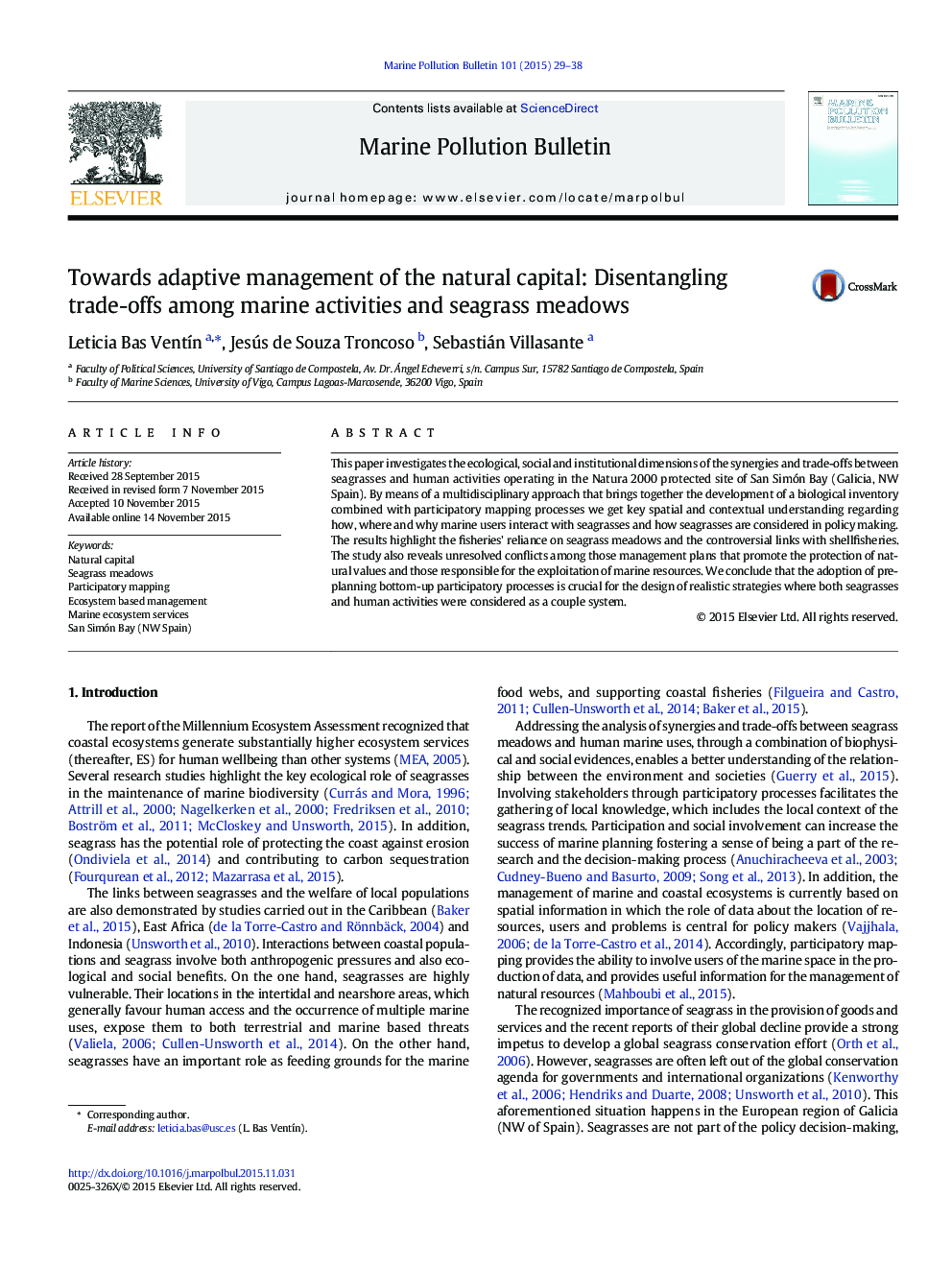| Article ID | Journal | Published Year | Pages | File Type |
|---|---|---|---|---|
| 4476585 | Marine Pollution Bulletin | 2015 | 10 Pages |
•Participatory processes are key tools to disentangle social-ecological benefits of seagrasses.•Exposition of seagrasses to human activity varies depending on spatial dynamics.•Considering seagrasses as a coupled system helps to detect unknown complex interactions.•Conducting pre-planning participatory processes favours the design of holistic strategies.
This paper investigates the ecological, social and institutional dimensions of the synergies and trade-offs between seagrasses and human activities operating in the Natura 2000 protected site of San Simón Bay (Galicia, NW Spain). By means of a multidisciplinary approach that brings together the development of a biological inventory combined with participatory mapping processes we get key spatial and contextual understanding regarding how, where and why marine users interact with seagrasses and how seagrasses are considered in policy making. The results highlight the fisheries' reliance on seagrass meadows and the controversial links with shellfisheries. The study also reveals unresolved conflicts among those management plans that promote the protection of natural values and those responsible for the exploitation of marine resources. We conclude that the adoption of pre-planning bottom-up participatory processes is crucial for the design of realistic strategies where both seagrasses and human activities were considered as a couple system.
